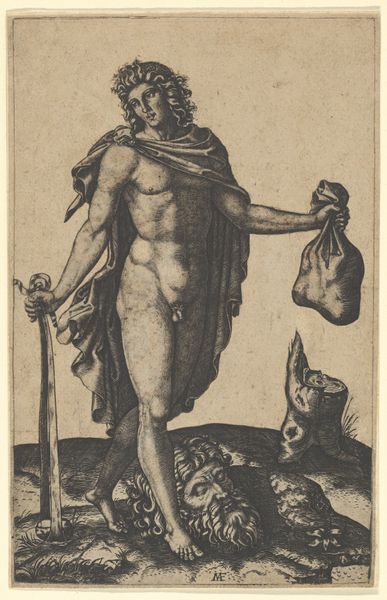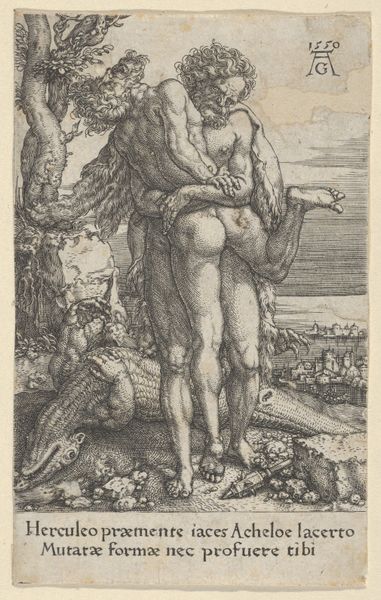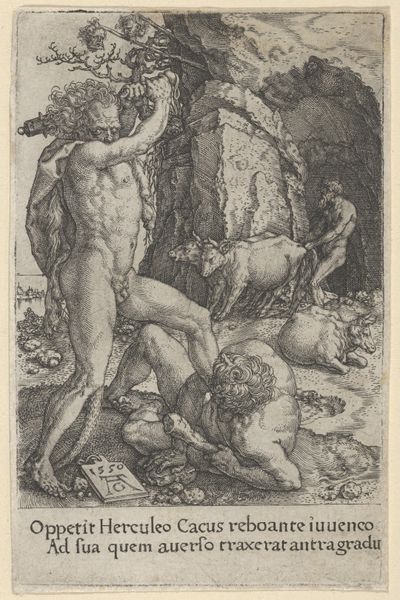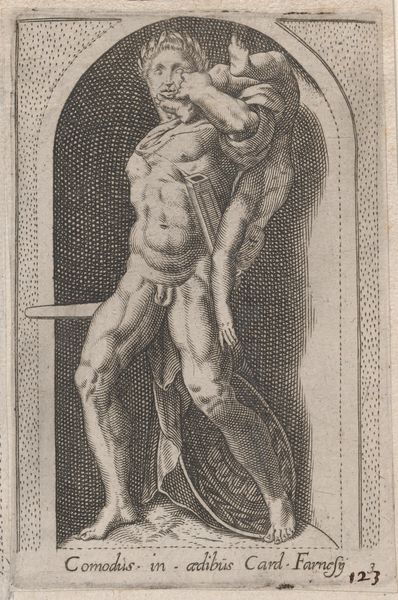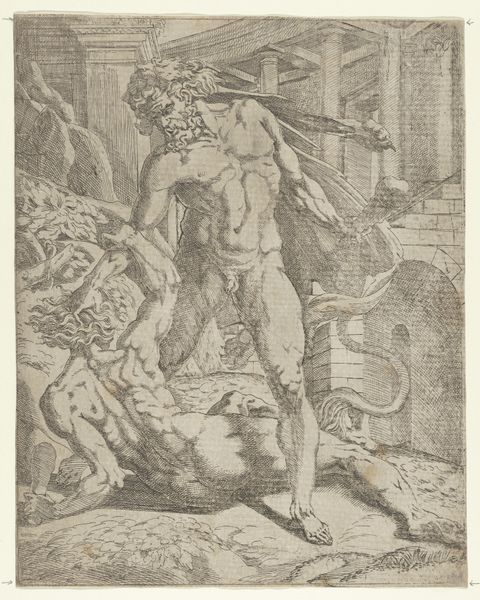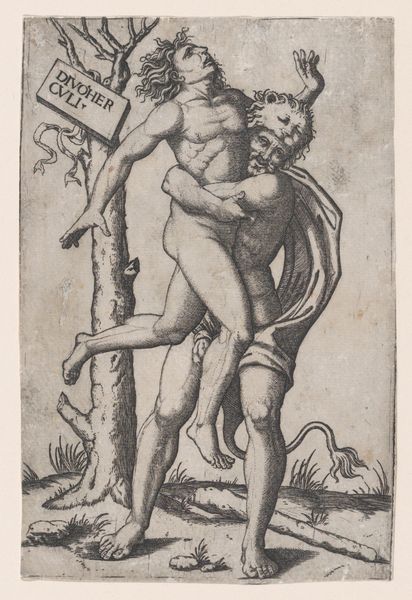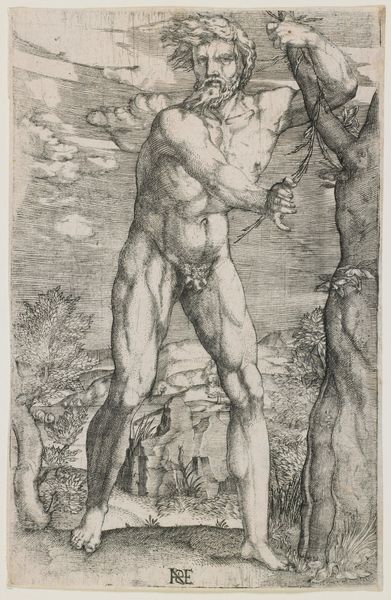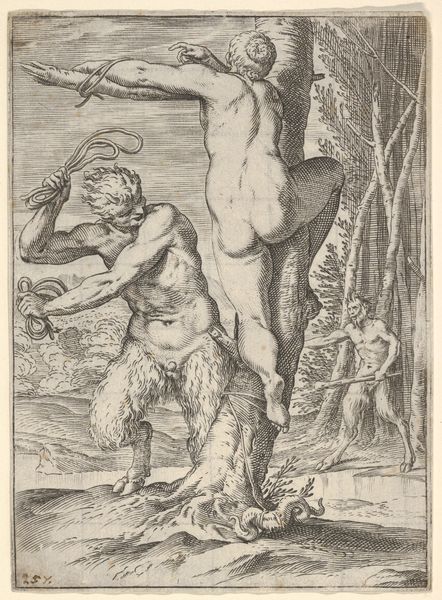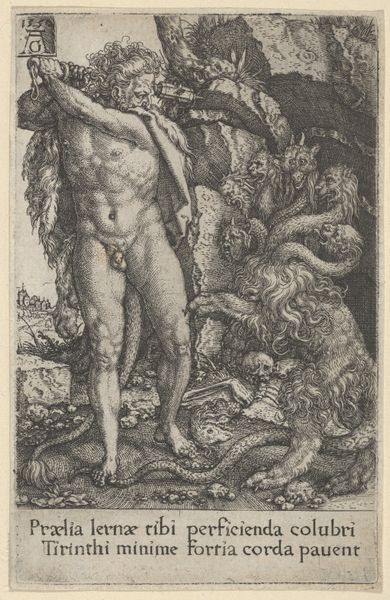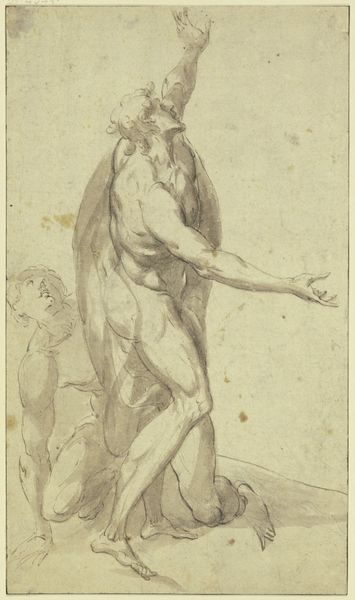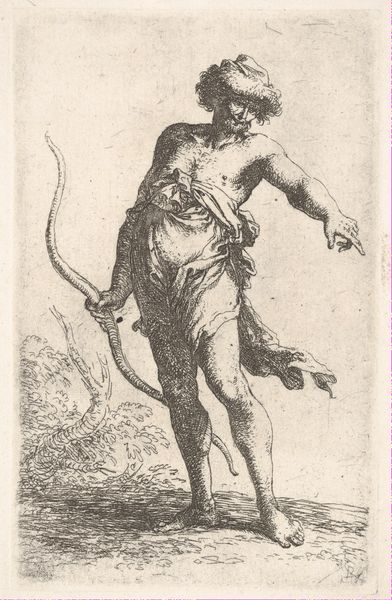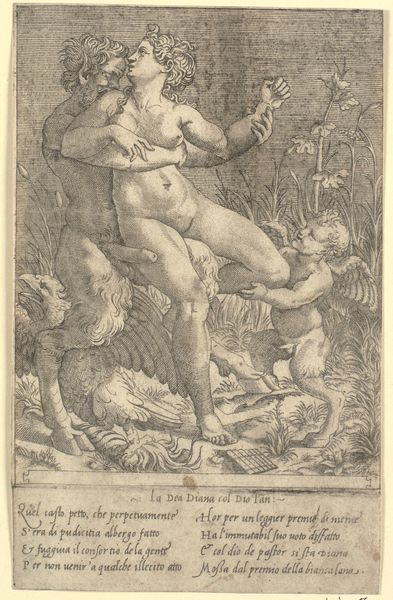
Naked man walking to the right carrying a column base 1512 - 1522
0:00
0:00
drawing, print, engraving
#
drawing
# print
#
figuration
#
11_renaissance
#
italian-renaissance
#
nude
#
engraving
Dimensions: Sheet: 8 7/16 × 5 11/16 in. (21.5 × 14.5 cm)
Copyright: Public Domain
Curator: This engraving, rendered by Marcantonio Raimondi between 1512 and 1522, is called "Naked man walking to the right carrying a column base". It's currently held in the collection of the Metropolitan Museum of Art. Editor: The immediate impression I get is of immense burden—a physical strain but perhaps something more. He's almost bent double under the weight. The contrast of the muscular body with the inanimate, heavy column is really striking. Curator: Indeed. The work demonstrates Raimondi's mastery of engraving and his clear engagement with classical antiquity. It’s worth considering that engravings like these facilitated the wider circulation of artistic ideas at the time, acting almost as reproductive technologies of the era. Editor: Absolutely, and beyond that technical accomplishment, this image makes me consider the male form in art history, specifically how notions of labor and masculinity are constructed and idealized through these bodies and actions. What is this column for him, and what is he for the column? The power dynamics here are palpable. Curator: I agree. Looking closely at the column base, one sees the artist took the time to use different hatched line weights to demonstrate the roundness of the volute carvings and a play of light across it. This reflects how important an understanding of classicism was, and how its elements were seen as intrinsically precious things worth transporting and reconstructing within the Renaissance cultural landscape. Editor: Right. What interests me, though, is the seeming futility of his action—the raw vulnerability in his posture. It hints at a narrative where labour is more than simple production but a fundamental, if perhaps unfair, aspect of human existence. Curator: Well, considering the processes involved in its production and distribution gives us just a taste of the manual and mental effort needed to produce engravings in the Italian Renaissance. Editor: It’s a perfect reminder that even seemingly simple images like this hold such profound conversations about production, gender, labour, and representation, and how that impacts society, in both then and now. Curator: A complex network of influences, artistic skill, and socio-economic circumstances contributed to this powerful work being in our presence today.
Comments
No comments
Be the first to comment and join the conversation on the ultimate creative platform.

